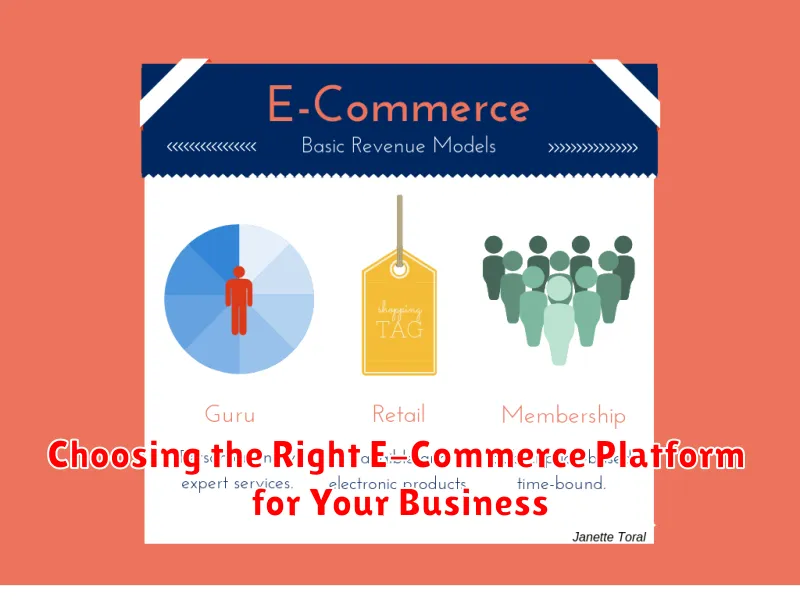In the dynamic world of online retail, e-commerce platforms play a pivotal role in connecting businesses with consumers. But how do these platforms generate revenue? This article delves into the various revenue streams that power these digital marketplaces, exploring the mechanics behind their profitability. Understanding these mechanisms is crucial for both businesses leveraging these platforms and for aspiring entrepreneurs seeking to establish their own e-commerce ventures. We will uncover the strategies employed by major players and examine the evolving landscape of e-commerce platform monetization. From transaction fees and subscription models to advertising and value-added services, we’ll dissect the key components that contribute to the financial success of these platforms.
This exploration of e-commerce platform revenue models will provide a comprehensive overview of the monetization strategies used in the competitive online marketplace. We’ll analyze the benefits and drawbacks of each approach, offering insights into how platforms select the most effective methods for generating revenue. Furthermore, we’ll consider the impact of these revenue streams on the overall e-commerce ecosystem, including the implications for sellers, buyers, and the future of online retail. By understanding how e-commerce platforms earn their keep, stakeholders can make informed decisions, optimize their strategies, and thrive in the ever-expanding digital economy.
Diverse Revenue Models in E-Commerce
E-commerce platforms employ a variety of revenue models to generate income and sustain their operations. Understanding these models is crucial for both platform owners and businesses seeking to leverage these platforms for sales.
Rather than relying on a single income stream, successful platforms often diversify their revenue generation strategies. This diversification provides stability and allows platforms to adapt to changing market conditions. Flexibility in revenue models also enables platforms to cater to diverse business needs and sizes, from small startups to large enterprises.
A key factor in selecting a revenue model is aligning it with the platform’s overall value proposition. The chosen models should not only be profitable but also contribute to the platform’s growth and sustainability. By implementing a mix of revenue streams, platforms can build a robust business model that supports ongoing innovation and expansion.
Subscription Fees: Recurring Revenue for Platform Owners
Subscription fees represent a predictable and stable revenue stream for e-commerce platforms. Merchants pay a recurring fee, often monthly or annually, to access the platform’s features and services. This model provides a consistent income flow, allowing platforms to invest in infrastructure, development, and customer support.
Subscription tiers are common, offering varying levels of service based on the merchant’s needs. A basic plan might offer limited product listings and bandwidth, while premium plans provide enhanced features like analytics dashboards, dedicated support, and marketing tools.
The value proposition for merchants lies in the comprehensive suite of tools and services provided for a fixed cost. This predictable expense allows businesses to budget effectively and scale their operations as needed. Subscription fees benefit platform owners by providing a stable financial foundation to support ongoing development and improvements.
Transaction Fees: A Cut of Every Sale
Transaction fees represent a fundamental revenue stream for many e-commerce platforms. Essentially, the platform takes a small percentage of each sale processed through its system. This model is straightforward and scales directly with the platform’s sales volume. The percentage charged can vary based on factors like the platform’s pricing tier, the merchant’s sales volume, and the type of product sold.
Transparency is crucial with transaction fees. Merchants need to clearly understand how these fees are calculated to effectively manage their profit margins. While seemingly small, these fees can significantly impact a business’s bottom line over time, especially for high-volume sellers.
Several factors influence the specific transaction fee percentage. These can include:
- Payment processing method (e.g., credit card, debit card, digital wallets)
- Product category
- Sales volume thresholds
Platforms often offer different pricing tiers where higher-volume sellers might qualify for lower transaction fee percentages. This incentivizes growth and rewards merchants for their success on the platform.
Advertising Revenue: Reaching a Targeted Audience
E-commerce platforms are prime locations for targeted advertising. They collect vast amounts of data on user behavior, preferences, and purchase history, allowing businesses to precisely target their ads to the most receptive audience. This data-driven approach ensures that ads are shown to users who are most likely to be interested in the product or service being advertised, leading to higher conversion rates and a better return on investment for advertisers.
Platforms can offer various advertising options, including sponsored product listings that appear within search results, banner ads displayed prominently on the site, and video ads integrated into the platform’s content. These varied formats cater to different advertising objectives and budgets.
The highly segmented audience available through e-commerce platforms makes advertising incredibly effective. Advertisers can target users based on demographics, purchase history, browsing behavior, and even specific product interests. This granular control allows for highly personalized advertising campaigns, increasing the likelihood of a positive response.
Commission-Based Sales: Partnering with Merchants
Commission-based sales represent a popular revenue model where e-commerce platforms act as intermediaries, connecting buyers and sellers while taking a percentage of each successful transaction. This model fosters a symbiotic relationship, where the platform’s success is directly tied to the sales performance of its merchants. Platforms leveraging this model often provide valuable services such as marketing, payment processing, and logistics support to justify the commission charged.
The commission percentage can vary significantly based on factors such as the product category, sales volume, and the platform’s overall pricing structure. High-value items or niche markets might command higher commissions, while competitive platforms may offer lower rates to attract more merchants.
This model is particularly attractive to new or smaller businesses that may lack the resources or expertise to manage their own online presence effectively. By leveraging the platform’s established infrastructure and customer base, merchants gain access to a wider market while streamlining their operations. This shared success model makes commission-based sales a dynamic and sustainable revenue stream for many e-commerce platforms.
Value-Added Services: Offering Premium Features

Beyond basic transaction fees, e-commerce platforms often generate revenue through value-added services. These premium features cater to sellers seeking enhanced visibility, advanced analytics, or streamlined operations. These offerings allow platforms to diversify their income streams while providing tangible benefits to businesses willing to invest.
Examples of common value-added services include:
- Enhanced Listing Visibility: Premium placement in search results or dedicated advertising options to boost product exposure.
- Advanced Analytics Dashboards: In-depth data insights into customer behavior, sales trends, and inventory management to optimize performance.
- Fulfillment and Shipping Services: Streamlined logistics solutions, including warehousing, packaging, and shipping, often at discounted rates.
- Dedicated Customer Support: Prioritized assistance and faster response times for sellers requiring personalized support.
- Marketing and Promotional Tools: Access to email marketing platforms, social media integration tools, or other promotional resources.
By offering these premium features, platforms create a tiered service model, catering to businesses with varying needs and budgets. This strategy allows them to generate additional revenue while empowering sellers to scale and optimize their online presence.
The Impact of Platform Fees on Sellers
E-commerce platform fees significantly impact sellers’ profitability. Transaction fees, often a percentage of each sale, directly reduce profit margins. Listing fees, charged per item listed, can accumulate, especially for high-volume sellers. Subscription fees for premium features or access to the platform itself represent a recurring cost that must be factored into pricing strategies.
These fees influence pricing decisions. Sellers must carefully calculate their costs, including platform fees, to determine a sustainable pricing model. Some sellers absorb these fees, reducing their profit margin, while others pass them on to consumers through higher prices. Competitive pricing becomes more challenging when platform fees are high, potentially impacting sales volume.
Ultimately, the impact of platform fees depends on the fee structure of the chosen platform and the seller’s sales volume. A platform with high transaction fees might be suitable for low-volume, high-margin products, while a platform with lower transaction fees but higher subscription fees might be better for high-volume sellers.
Choosing the Right E-Commerce Platform for Your Business

Selecting the right e-commerce platform is a critical decision for any business venturing into online sales. The platform you choose will significantly impact your operational efficiency, customer experience, and ultimately, your bottom line. Several factors should be carefully considered during this selection process.
First, evaluate your business needs. Consider your product catalog size, sales volume projections, and any specific industry requirements. A small business with a limited inventory may thrive on a simpler platform, while a large enterprise requires a more robust solution.
Scalability is another key factor. Choose a platform that can grow alongside your business, accommodating increasing traffic and expanding product lines without performance degradation.
Finally, assess the costs associated with each platform. This includes not only subscription fees but also transaction fees, listing fees, and any additional charges for premium features or integrations. Balancing functionality with affordability is essential for maximizing your return on investment.

